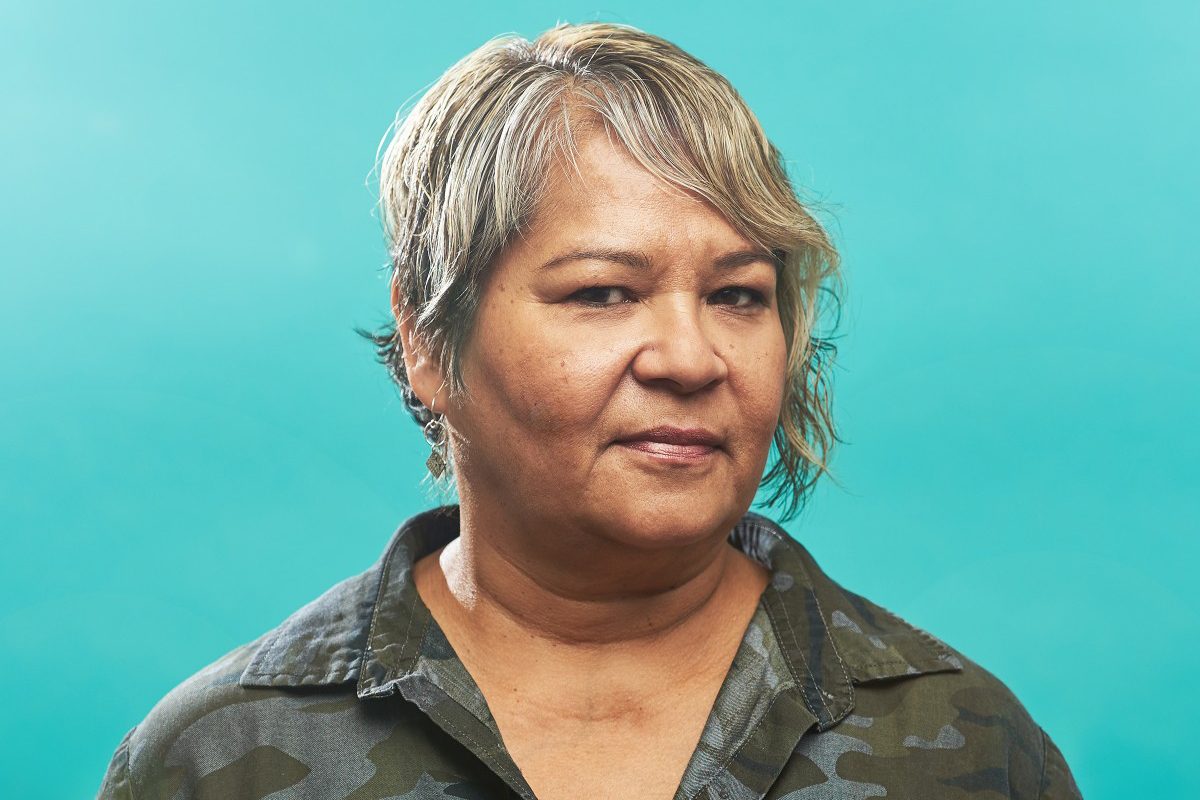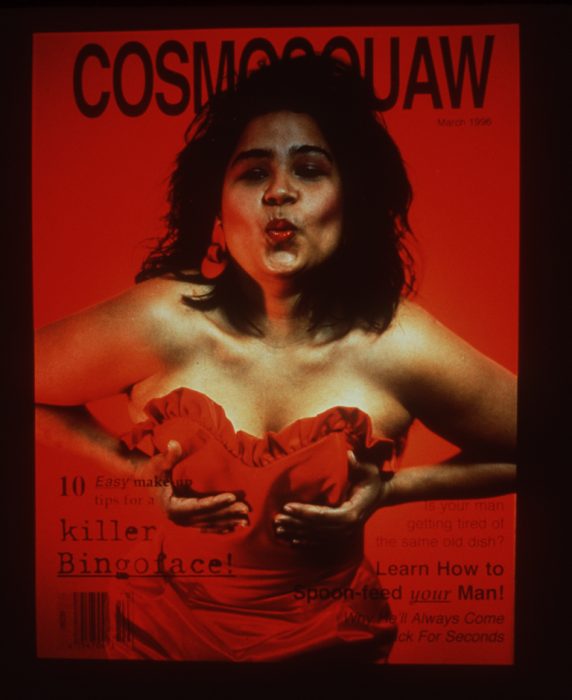
Photo of Lori Blondeau by David Lipnowski
Deconstructing notions of the Indigenous woman through performance art
Meet Indigenous Scholar: Lori Blondeau
A red suitcase with a big, sparkly sticker that says “Diva” leans against the wall in assistant professor Lori Blondeau’s office. One of two of the most recent Indigenous artists hired at the University of Manitoba’s School of Art, Blondeau’s walls are still slightly bare. This comes as no surprise, as Blondeau’s preferred medium is performance art.
“My late mentor James Luna once told me, ‘Performance offers us Indians the chance to say things you can’t say in other mediums without compromising who we are,’” she says as she flips through photos of her dear friend. Photography is also of interest to her, as it’s the medium she uses when creating a new performance piece.
Blondeau hails from George Gordon First Nation and was living in Saskatoon, Saskatchewan before moving to Winnipeg this summer. The Cree, Saulteaux and Métis artist and self-labelled “high-tech storyteller” chose Winnipeg’s north end as her home.
“Place is always important,” she says. “My new reality is that I live in Canada’s most dangerous neighbourhood.” The move has shifted Blondeau’s reality, and she says this shift will undoubtedly shape her art moving forward.
Although she does not associate with feminism — citing the major differences in struggles between women of colour and white women — Blondeau’s art reflects the ways Indigenous women are often stereotyped in the media, news and popular culture. Observing the notions of identity associated with Indigenous women, Blondeau says she works to “undo them, deconstruct them and knock them on their heads.”
Two main stereotypical figures in Blondeau’s art include the Indian Princess and the Squaw. In reference to her 1996 piece called COSMOSQUAW, Blondeau said she was inspired to create an image that was specifically for Indigenous women. The photograph, illuminated in a light box, contains an Indigenous woman with full hair and make-up and a red dress as she leans forward for a kiss. Laid out like a magazine cover, the image also includes headlines such as “10 Easy make-up tips for a killer Bingoface!” and “Learn How to Spoon-feed your Man!”

COSMOSQUAW, 1996. Photo credit: Bradlee LaRocque
“I was working at a Native women’s shelter in Montreal, and the women would always come in with these Cosmopolitan magazines,” she says. “I always wondered how they became Cosmo’s audience. That’s when I made the COSMOSQUAW piece – for them.” Blondeau adds that she believes all Indigenous women are cosmosquaws, or “one with the earth.”
When it comes to the Indian Princess narrative, Blondeau says her work is not a reclamation of anything. “Indigenous people shouldn’t have to reclaim anything that was always theirs to begin with,” she says. At the same time, Blondeau types into Google and pulls up an image of a “Sexy Pocahontas” Halloween costume worn by a non-Indigenous woman. “Our society is so desensitized to our missing and murdered Indigenous women,” she says with a sigh.
On a larger scale, Blondeau describes the challenges of pushing back in an institutional setting. She finds parallels in the ways in which the art world and academia operate. As art galleries attempt to fill positions with Indigenous curators, and universities create positions for Indigenous academics, Blondeau explains that this has been a big theme throughout her life. “Institutions are really struggling to reconcile,” she says.
When asked what advice she has for Indigenous students who want to participate in either the art world or in academia, Blondeau stresses that it is important to take up space. “Follow your passion,” she says, “and take up as much space as you can in the institution, whatever institution that may be.”
Lori Blondeau is a Cree/Saulteaux/Métis artist originally from Saskatchewan from George Gordon First Nation in Treaty 4. Blondeau holds an MFA from the University of Saskatchewan, has sat on the Advisory Panel for Visual Arts for the Canada Council for the Arts and is a co-founder and the current director of TRIBE, a Canadian Aboriginal arts organization. Her practice includes both visual and performance contemporary art. Blondeau is an assistant professor in the U of M’s School of Art.






